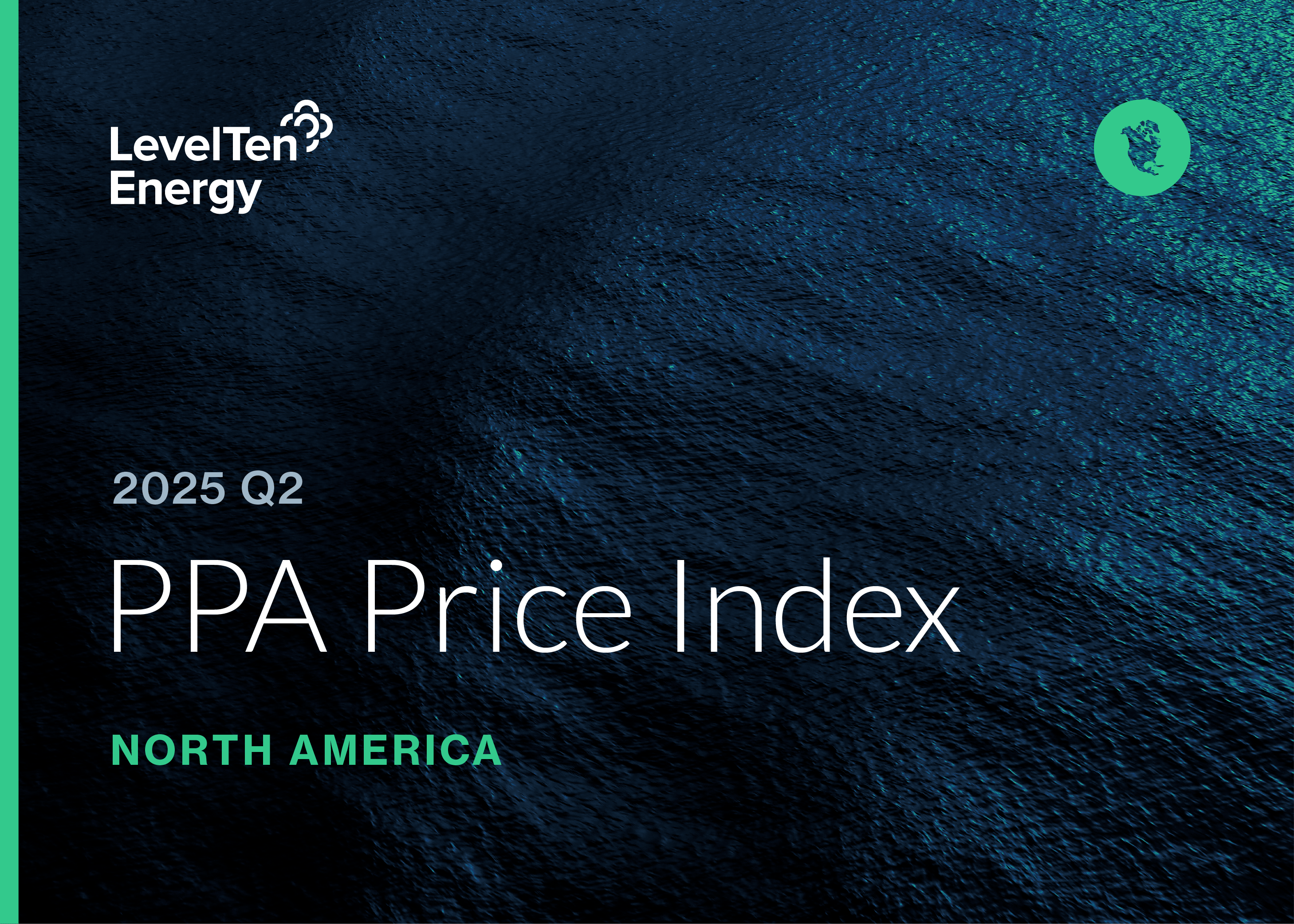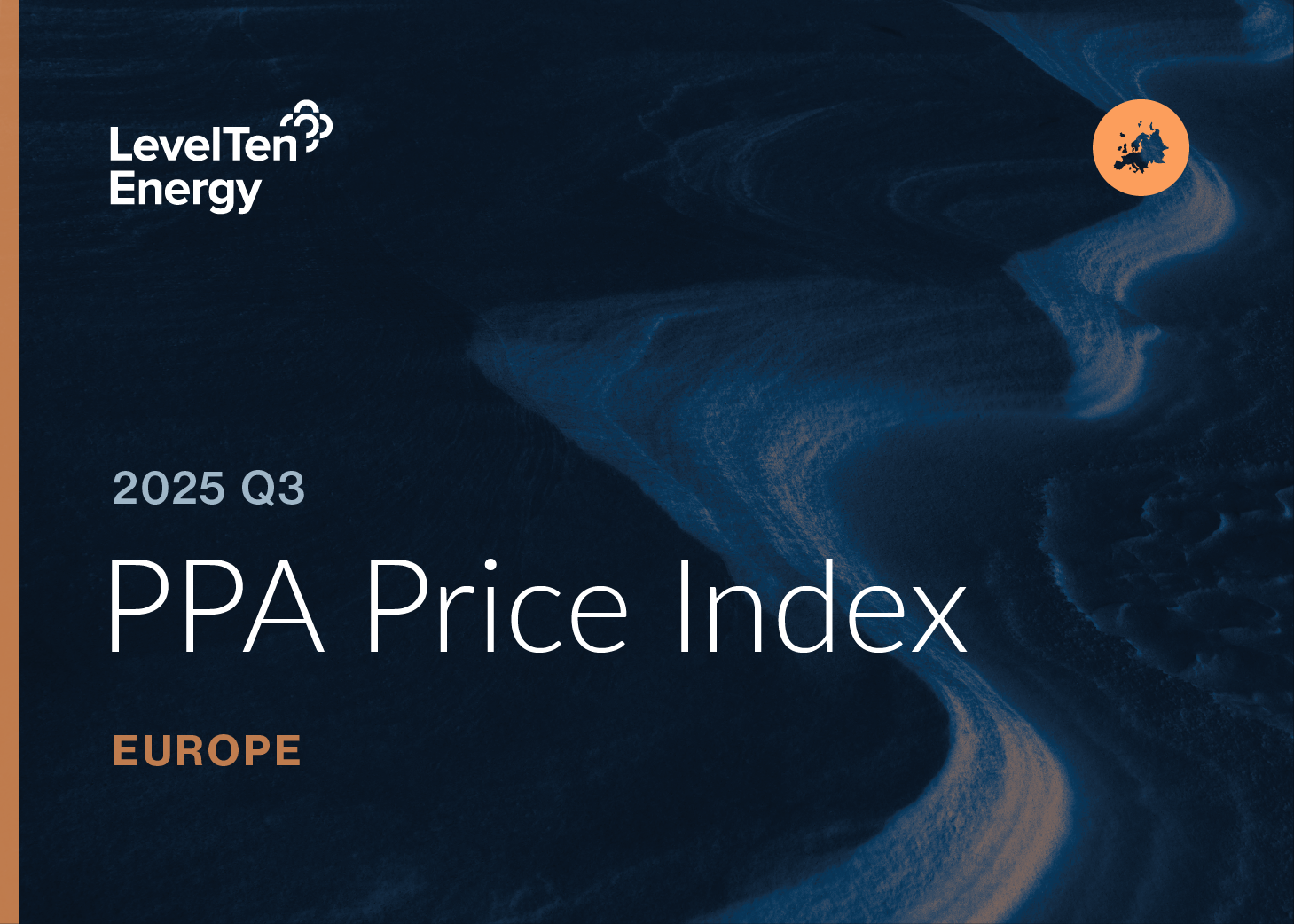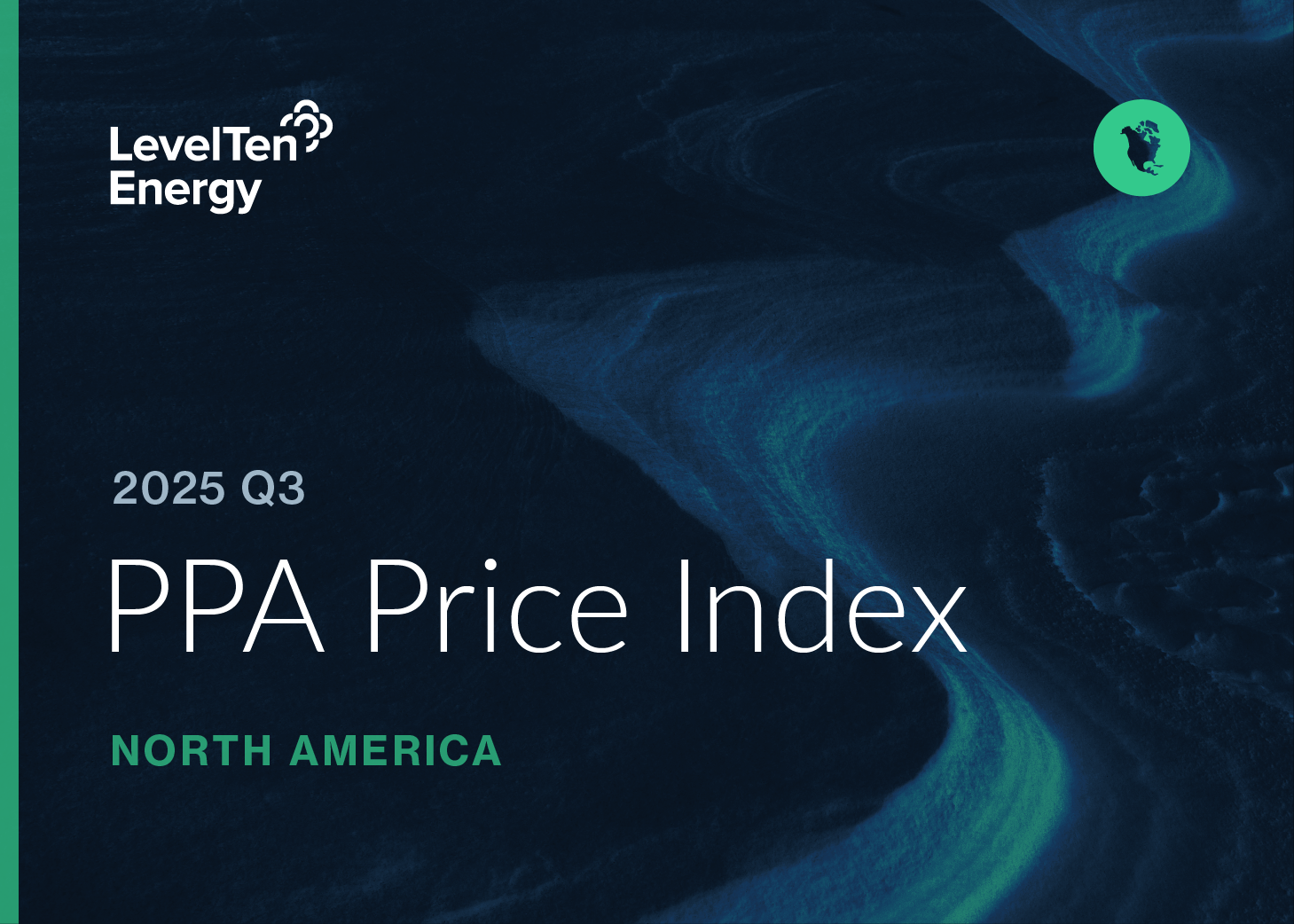LevelTen Energy’s Q2 2025 North AmericaPPA Price Index Report is now available for subscribers. Highlights of this quarter’s report include:
Q2's Solar Prices Largely Stable
Q2 2025 saw P25 solar prices on LevelTen Energy's Market-Averaged Continental Index increase by just 1%. On the heels of a similar solar price trend in Q1, a second-straight quarter of modest price increases is perhaps surprising amid an environment of immense policy uncertainty. But while solar prices may appear unaffected, the pricing impacts of tariffs, tax credit shifts, and other factors are being incorporated through means other than direct price hikes.
With so much volatility on the tariff and tax credit fronts, folding in specific price impacts for PPA offers is a tall order, if not outright impossible. Instead, a growing number of PPA counterparties are opting for contractual mechanisms that allow for future adjustments to price and other terms should various events come to pass. With President Trump's spending bill now law, Q3's dataset may shed light on its PPA pricing impacts.
Wind Prices Jump In Q2
P25 wind prices on LevelTen's Market-Averaged Continental Index rose by 11% in Q2. A significant quarterly spike in MISO wind prices was the largest driving factor behind the upward Continental pricing trend, though prices in all North American wind markets except one increased in Q2.
MISO’s quarterly price rise is tied to a drop in total offer volume and the long-term nature of wind development. Wind projects are typically slower to bring to market, and when economic conditions look unfavorable or regulatory uncertainty is high, developers often pause marketing efforts until conditions improve. This dynamic played out in MISO, where limited offer activity made prices more sensitive to shifts in individual projects. As developers continue to face challenges like permitting delays, interconnection hurdles, and policy volatility, more wind PPAs may remain on the back burner, contributing to reduced liquidity and upward pressure on prices.
Policy Moves Cloud IRA's Promise
On July 4, President Trump signed his signature spending and tax bill into law, which repeals or greatly dilutes much of the Inflation Reduction Act's 45Y and 48E tax credits for utility-scale wind and solar facilities. The new law requires projects beginning construction after July 4, 2026 to become operational before 2028 in order to qualify for tax credits, with projects starting construction before this 12-month deadline granted a four-year window until they must become operational. The bill also denies tax credit eligibility to projects starting construction after 2025 that rely too heavily on investment and/or equipment from China, or other "foreign entities of concern."
A few days later, President Trump issued an Executive Order directing the Treasury Department to scrutinize the ways in which projects can "start construction" — ordering the Department to restrict “the use of broad safe harbors unless a substantial portion of a subject facility has been built.” The specifics around these restrictions are unclear, introducing significant uncertainty for projects looking to reach this important milestone in the near term.
Nimble, Nuanced Contracting a Must
Tariffs, tax credit uncertainty, and other headwinds change nothing about the fast-rising demand for power in the US. With data centers continuing to be built and heat waves pushing grids to their limits, the fact remains that load-serving entities, tech titans, and corporate buyers more broadly have a growing, near-term need for power.
An accelerated phase-out for wind and solar tax credits is undoubtedly an intimidating prospect, and renewable players must sharpen their pencils and forge new paths forward. That said, Lazard's latest "Levelized Cost of Energy+" report reinforces that even without tax credits, wind and solar remain "the lowest-cost and quickest-to-deploy generation resource." Meanwhile, the cost of new gas generation reached a 10-year high. As energy buyers face pressing power needs, the economics and deployment timelines of renewables will remain compelling. With a robust supply of advanced-stage projects available on the LevelTen Energy Marketplace, competition for PPAs with assets that appear well-positioned to secure tax credits will be strong.
Subscribers of the PPA Price Index can log in to the new LevelTen Report Center to read the full report. Not a subscriber? Contact us today to get access.


.png)



